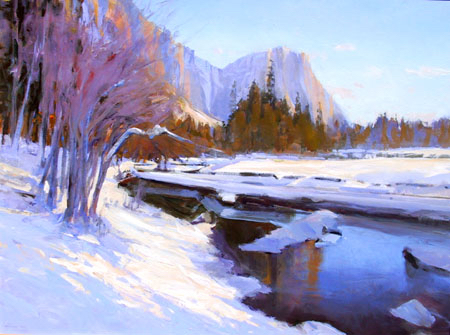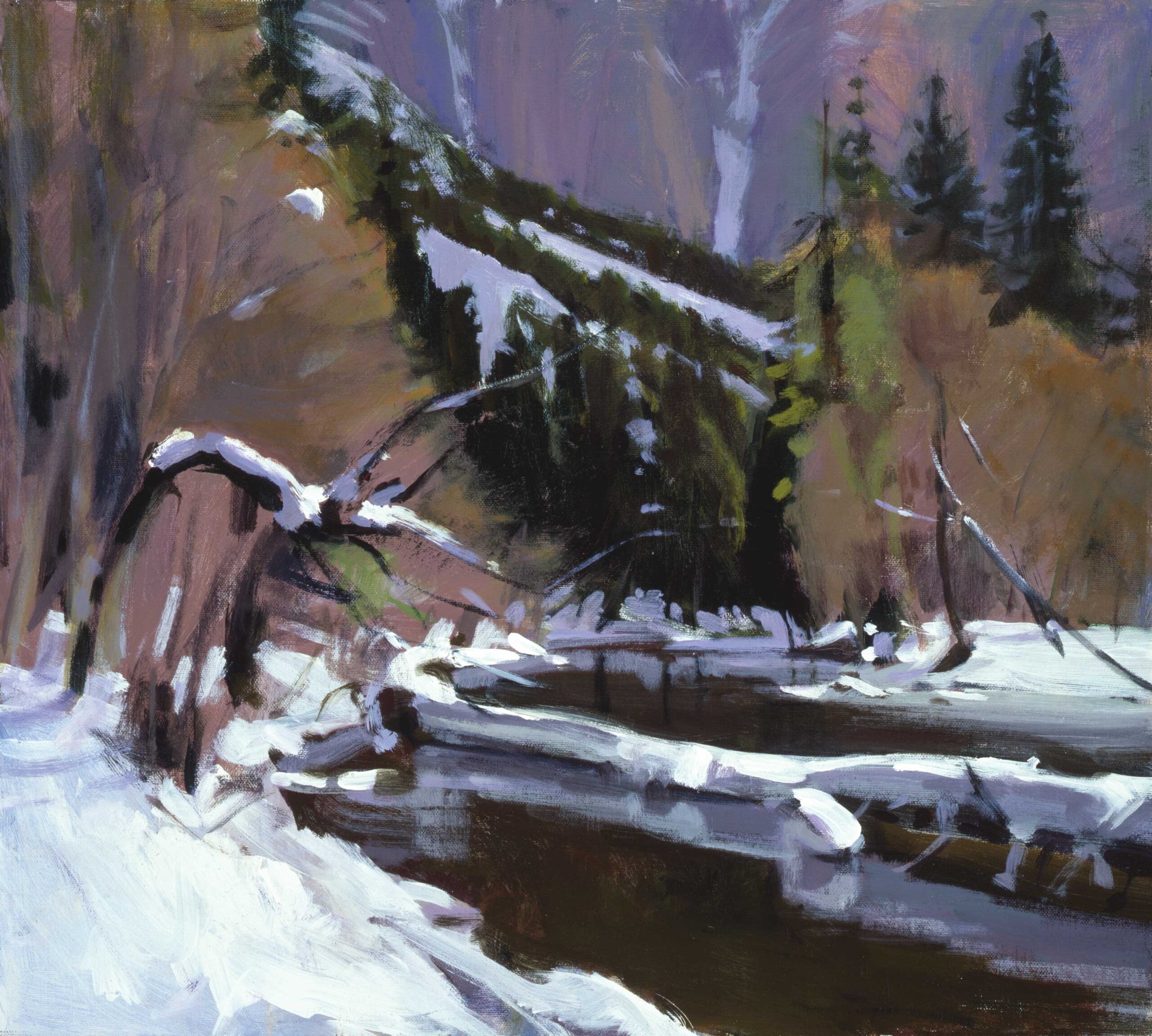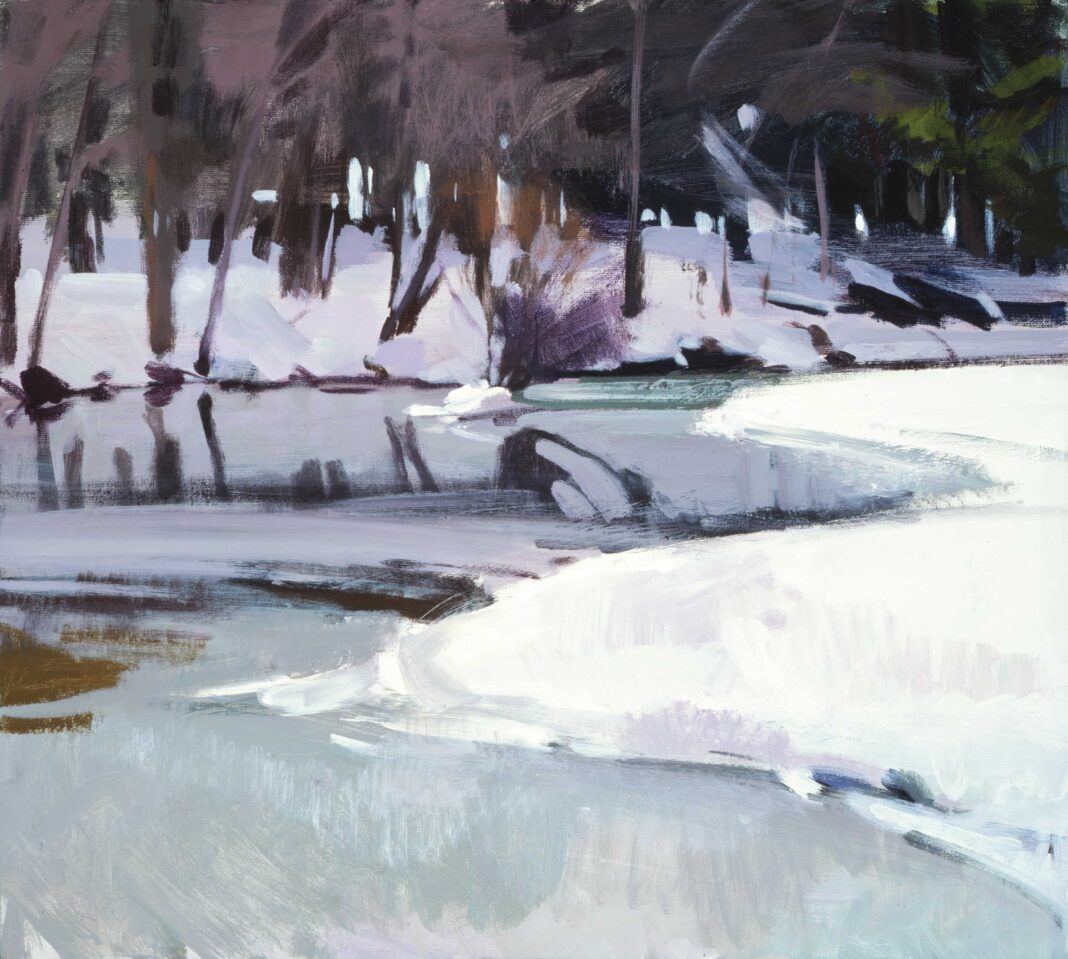Can You Paint with Acrylics in Cold Weather? Frank advice on painting with acrylic in cold weather from plein air painter Marcia Burtt:
By Marcia Burtt
Featured in the 2 1/2-hour PaintTubeTv workshop, “Landscapes,” with lessons on how to paint outdoors, even when the weather isn’t favorable.
Students complain about painting with acrylic in hot, dry, and windy weather. Standing under a tree or umbrella, using slow-drying media to extend the drying time . . . there are many ways to deal with the super-quick drying time of acrylic paint.

Twenty years ago I was standing in Yosemite Valley the morning after a huge snowstorm with a group of warmly wrapped fellow painters. They were dashing out little masterpieces using oil paints while I wept as acrylic paint dripped off my sizable canvas.
Yet there was no active snowfall.
My car was parked in a lot nearby, so every ten minutes I ran to it, set the painting on the dashboard in the sunshine, and let it dry — the same system I use for heavy fog or drizzle.
In this case, low temperature, not precipitation, was the villain: acrylic paint simply can’t cure in temperatures below 50 degrees.
The most suitable acrylics to use in cold weather are Golden’s OPEN brand — but the very reason I use acrylics is that they let me amend and re-see as I work; Open Acrylics don’t suit that method.
Try oils or oil pastels in very cold weather. Oil pastels give the advantage of immediately working over what you have done, somewhat like acrylics.
Or, plan to paint near your car in cold weather, using its warmth to allow your canvas to periodically dry. (Don’t sit inside and paint — the fumes can be harmful.)

- For more detailed information about painting with acrylics in cold weather, see “Painting in the Cold.”
- Visit Marcia Burtt’s website at https://www.marciaburtt.com/
- Become a better outdoor painter today when you get the FREE e-Book for artists, “240 Plein Air Painting Tips.” [click here]
- And browse more free articles here at OutdoorPainter.com




